It was early April. The summer had well set in and the soaring temperature & increasing humidity was the cause of great discomfort. Being a normal weekday, it was business as usual in our Allenby Road office. Suddenly, the publisher called for a meeting to shortlist a destination for our next Drive Out column. Several names popped up - both near and far – when suddenly someone suggested that we could visit Abanindranath Tagore’s Bagan Bari located in Konnagar. Kolkata’s love affair with anything related to the Tagore surname is well known and we were no exception to this rule.
On a sultry April morning, Team WHEELS hit the highway to explore Abanindranath Tagore’s Bagan Bari – perched surprisingly at a comfortable one and half hour drive from Kolkata.
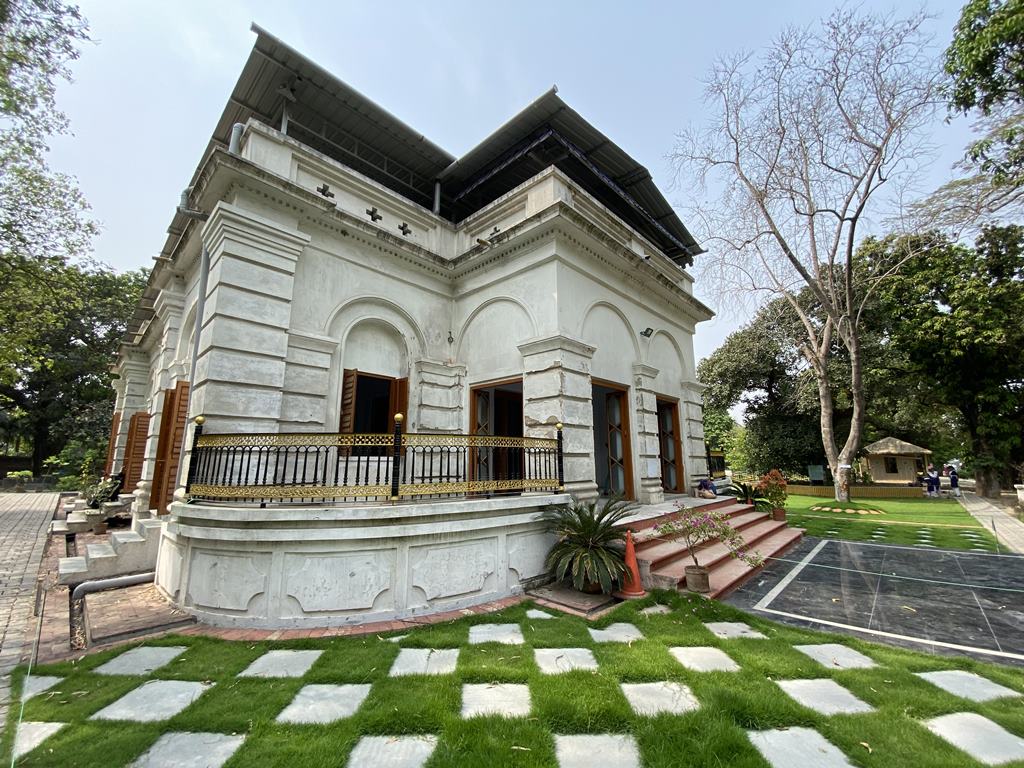
Route Description
We reached Vidyasagar Setu around 10:30 AM. After paying the toll, we proceeded straight on to Kona Expressway. We kept driving straight and crossed Santragachi Railway Station on our left. At 16.9 kilometeres we took the flyover that connects Kona Expressway to NH-19 (NH-2). We continued on NH-19 until we reached the Dankuni Junction with 18.9 kilometres on the odometer. From this point we left NH-19 and took the diagonal right road to enter Delhi Road. At 21.5 kilometres we took the right turn to enter Naity Road and followed the narrow meandering road till 26.7 kilometres; from here we turned left onto Indira Gandhi Road. We kept driving straight till we hit G.T. Road at 28.4 kilometres. We took a right turn from this point and drove straight for another 400 metres. Abanindranath Tagore’s Bagan Bari is located inside a narrow lane on your left. There is no provision to park the car inside the lane therefore it is advisable to safely park the car at an appropriate spot on G.T. Road itself. Total distance from Vidyasagar Setu is 28.8 kilometres.
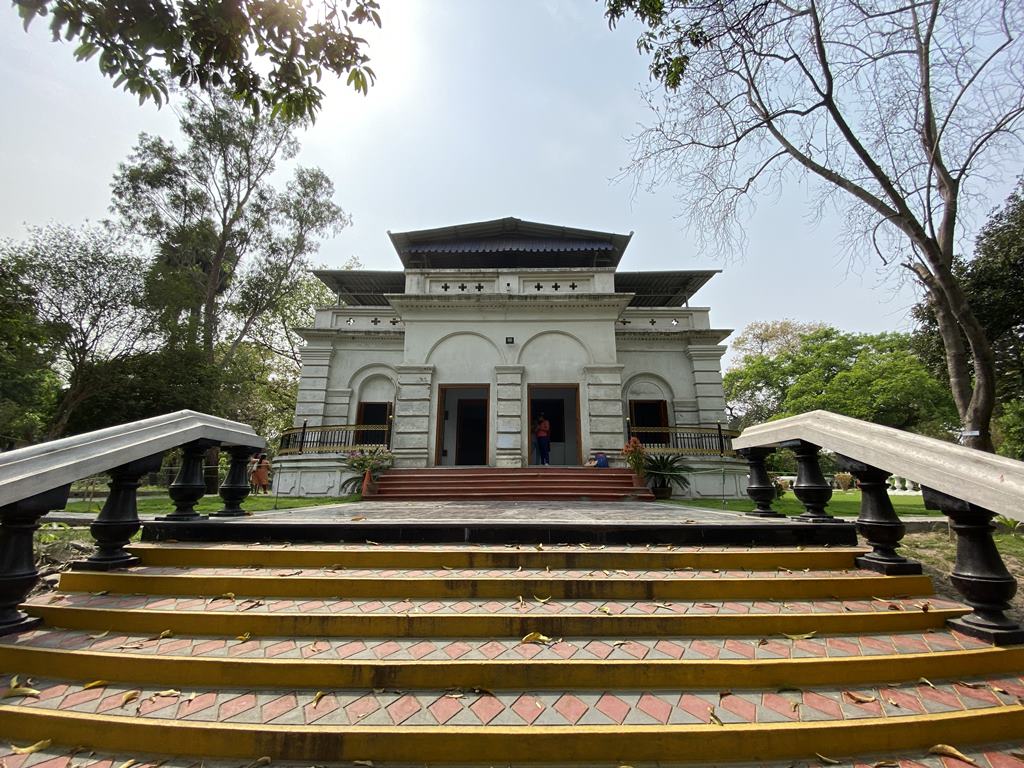
Abanindranath Tagore – The Artist
Abanindranath was born in Jorasanko, Calcutta on August 7, 1871. His father Gunendranath was the son of Girindranath, the second son of Dwarkanath Tagore. Abanindranath's first formal training in pastel, water colour and life study was under the supervision of his private tutor, Signor Gilhardi. He attended the studio of Charles Palmer, an English painter, for instructions in oil paintings and portraiture. In 1895 he painted the Krishna-Lila series, which display a unique blend of both European and Indian styles. E. B. Havell, Principal of the Calcutta School of Art, on seeing these paintings was impressed and offered Abanindranath the post of Vice-Principal of the School. Under Havell's guidance he studied Mughal and Rajput styles of painting.
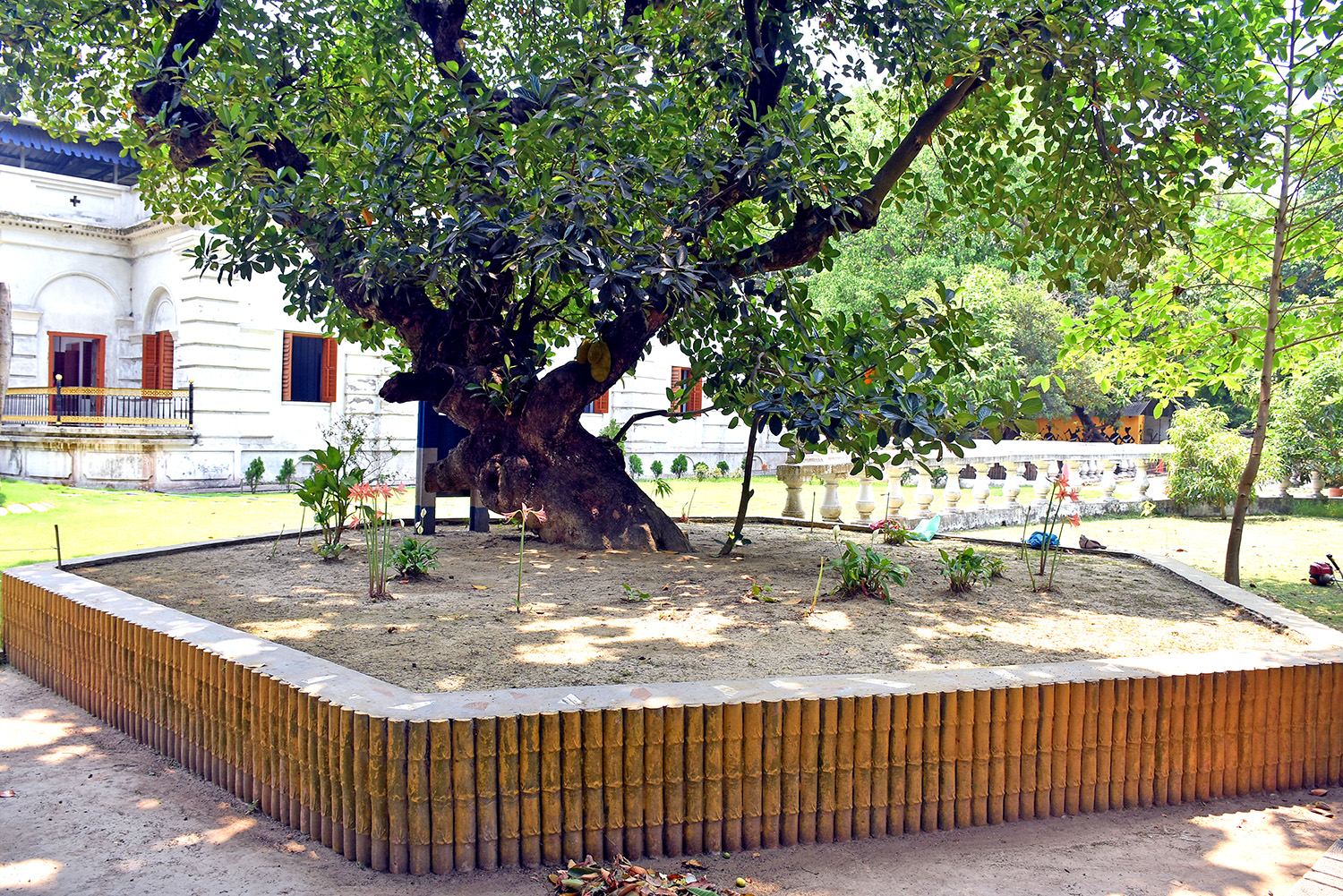
In the early years of the 20th century Abanindranath met Okakura. Okakura taught composition to Abanindranath by means of simple shapes such as matchsticks, emphasising the need for organic unity in art. In 1903 Okakura returned to Japan and sent his pupils Yokoyama Taikan and Hishida Shunso to Calcutta where they interacted with Abanindranath.
Taikan taught Abanindranath how to wield the brush with a light touch and of the evocative powers of gestures. He was able to incorporate this learning into his Omar Khaiyam series (1906-08).
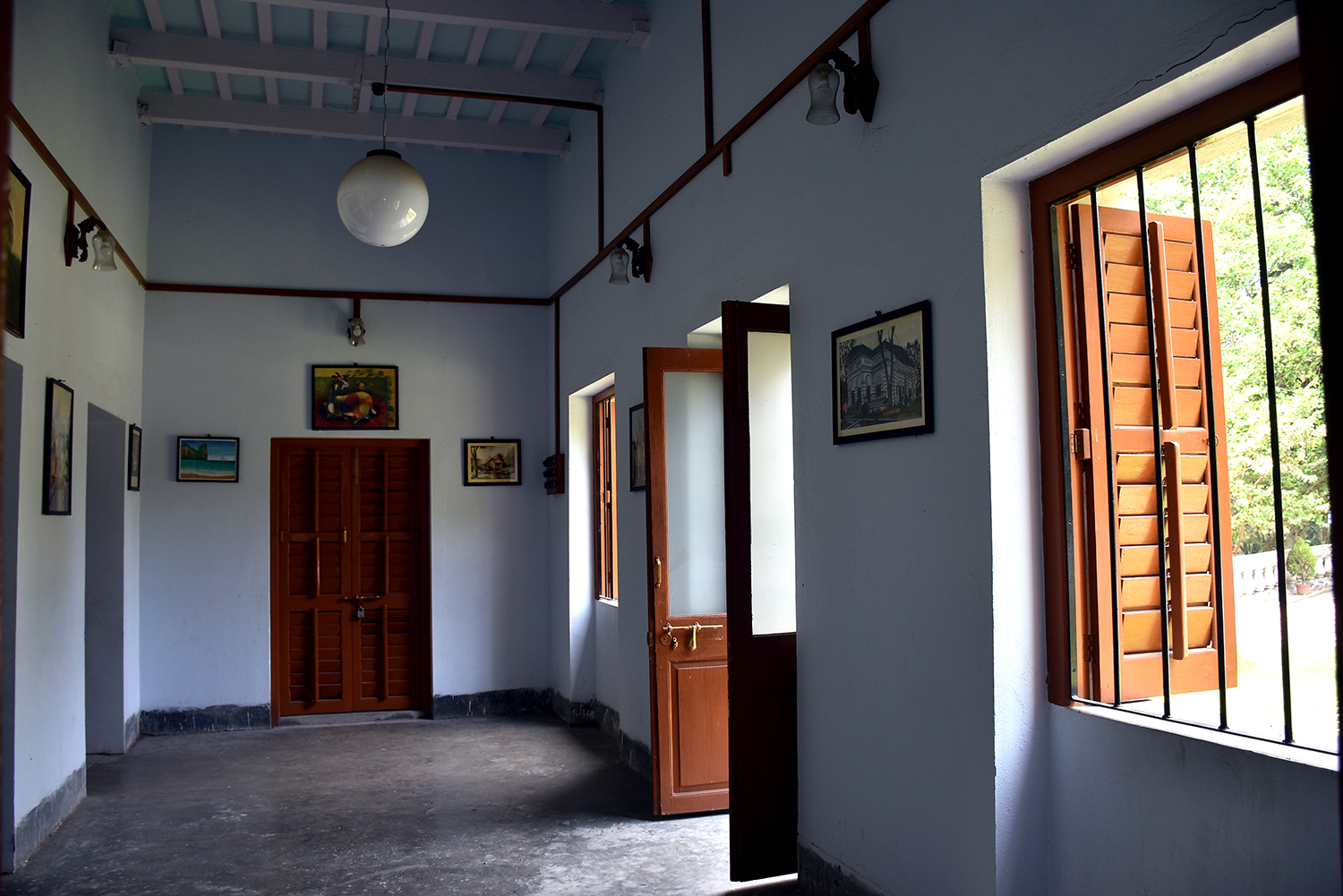
Abanindranath, the painter was established as the creator of a new national vocabulary in art and he helped to regenerate the decadent art and aesthetic scene in India. The Indian Society of Oriental Art was established to promote the Abanindranath-style on the national plane. It was Abanindranath who ushered in the modem art movement in Bengal. It was his brush, which first gave convincing proof that the Indian artist had his own contribution to make to the world of painting.
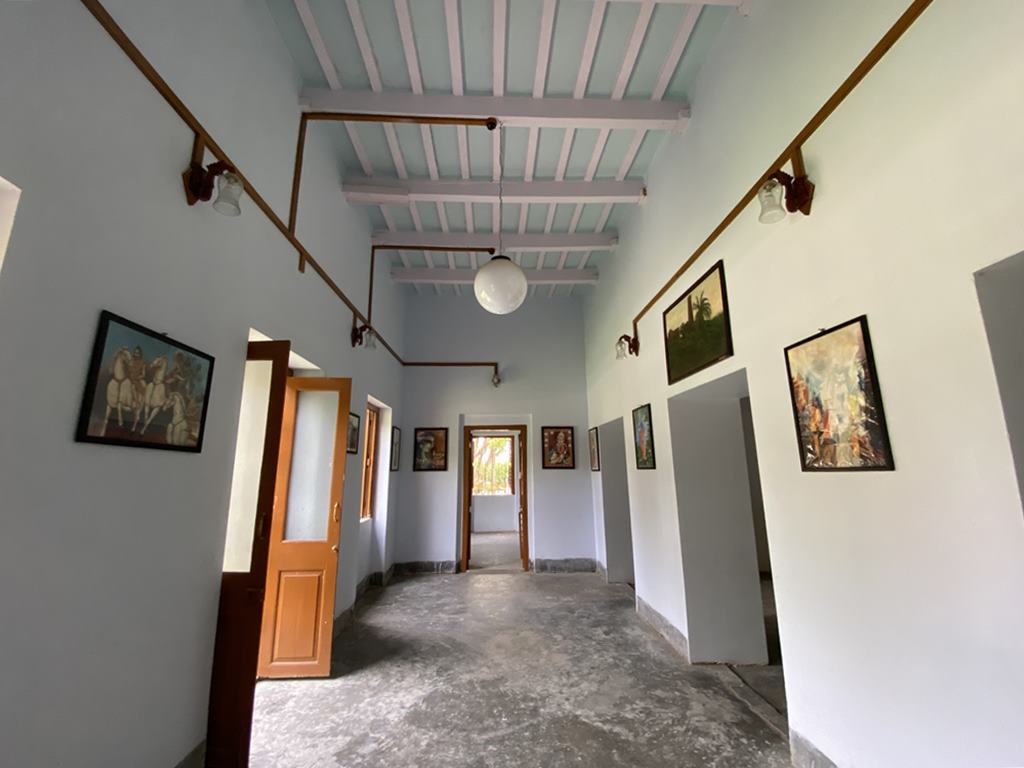
As Bageswari Professor of Art at the Calcutta University he gave a series of talks which were rare aesthetic illuminations; unparalleled in its simplicity and informalism. His books on art include Banglar Brata, Bharatshilpe Murti, Bharatshilpa and Bharatshilper Sadanga - all bearing the imprint of his great depth, profundity and simplicity. His prose has a distinctive quality - even the most complex subject is rendered in a simple, unassuming style revealing the essence of his genius.
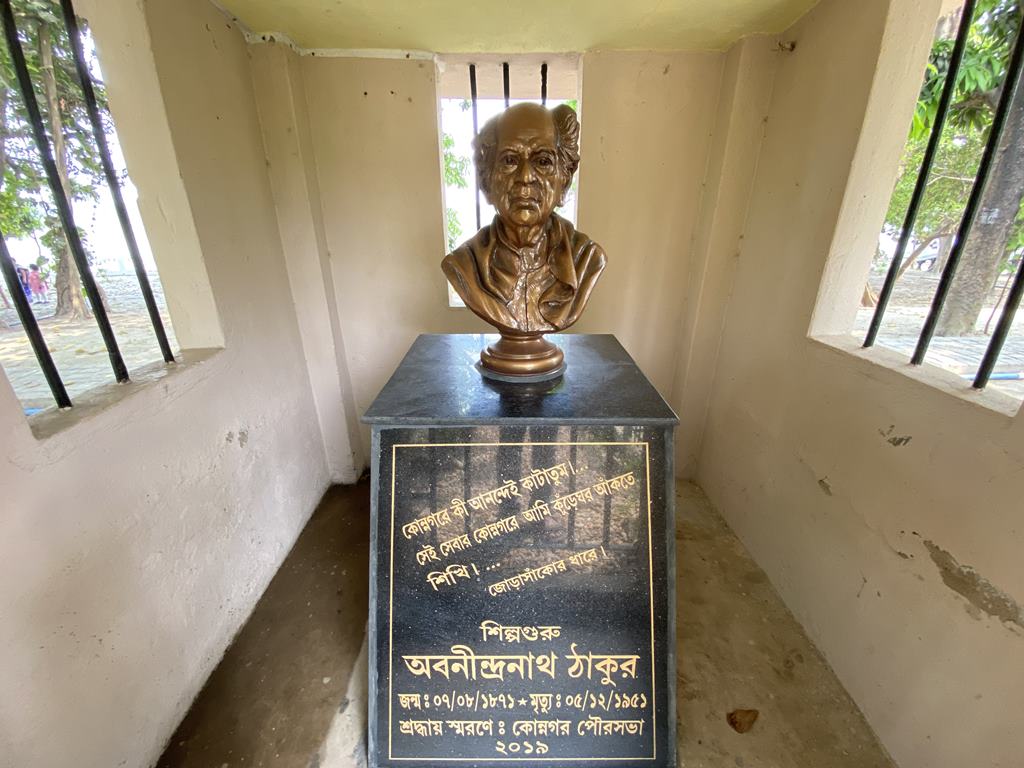
Abanindranath Tagore – The Writer
His writings for children are in a class by themselves, the stories are told so picturesquely that it was said, Aban Thakur writes pictures. His Kshirer Putul, Buro Angla, Raj Kahini, Sakuntala are classics which will always stimulate the imagination of the children of Bengal and be part of their childhood. His reminiscences form another genre where in Apankatha, Gharoa, Pathe Vipathe and Jorasankor Dhare has enlivened and immortalised his childhood, his Jorasanko days and the contemporary scene.
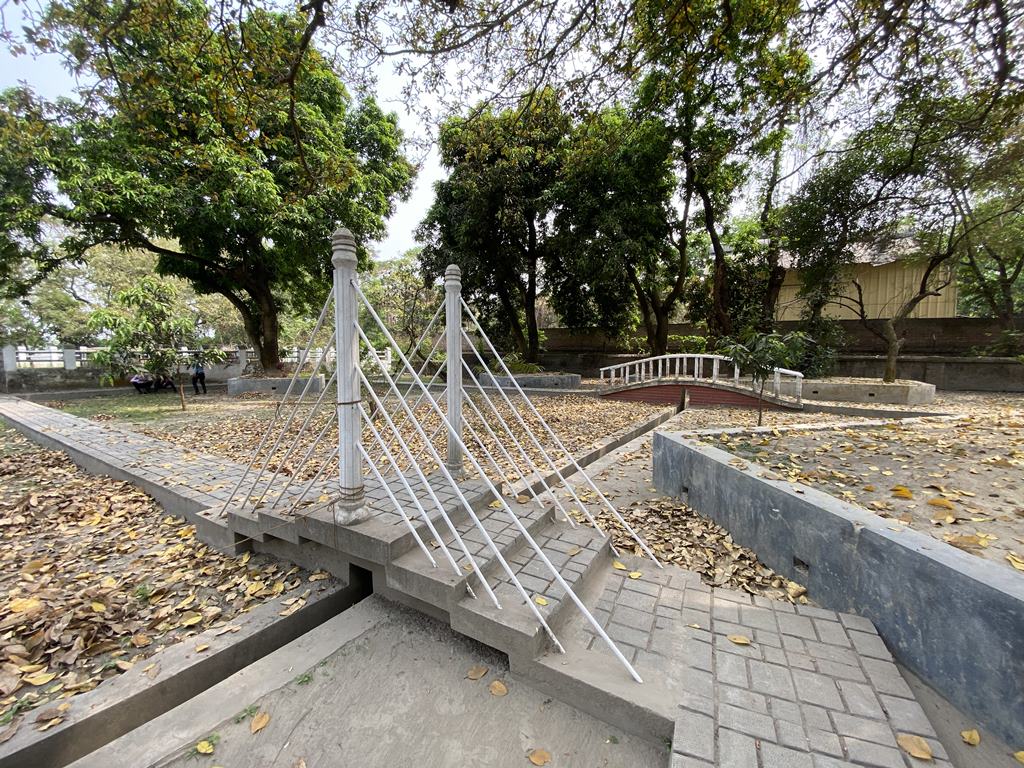
Mothers and aunts are presented as amusing and anxious onlookers when the servants toss him into the pond to teach him to swim. The historical book “Jorashakor Dhare” published by Visva Bharati written by Abanindranath Tagore, where we found that he learned to draw the picture of a hut for the very first time in his life.
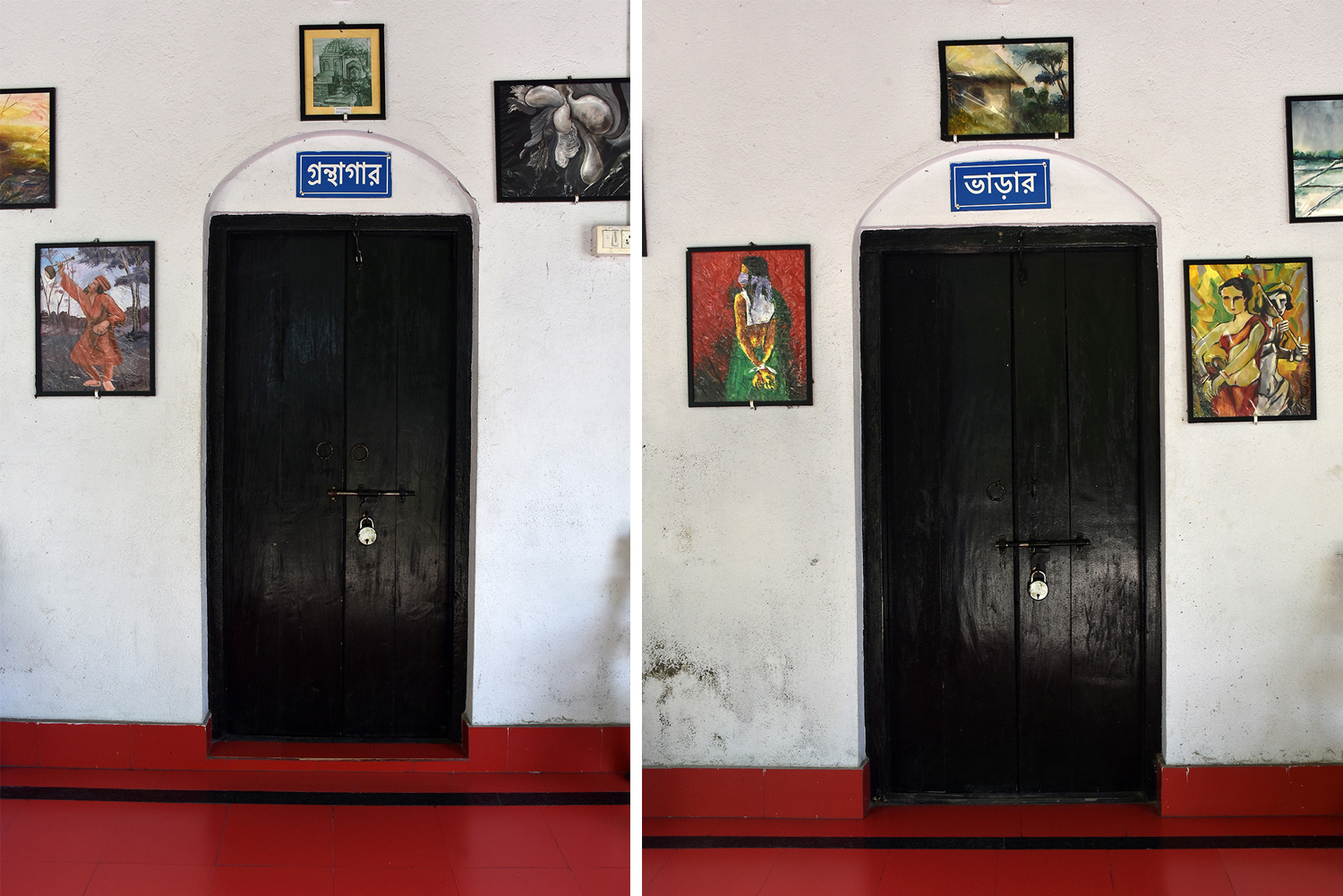
Abanindranath Tagore’s Connection To His Bagan Bari
The rural cocoon, however, is broken almost as soon as it is imagined. Into Abanindranath's childhood idyll comes "a terrible night which destroyed our lives in an instant" and permanently severed his connection to the Bagan Bari: the death of his father Gunendranath.
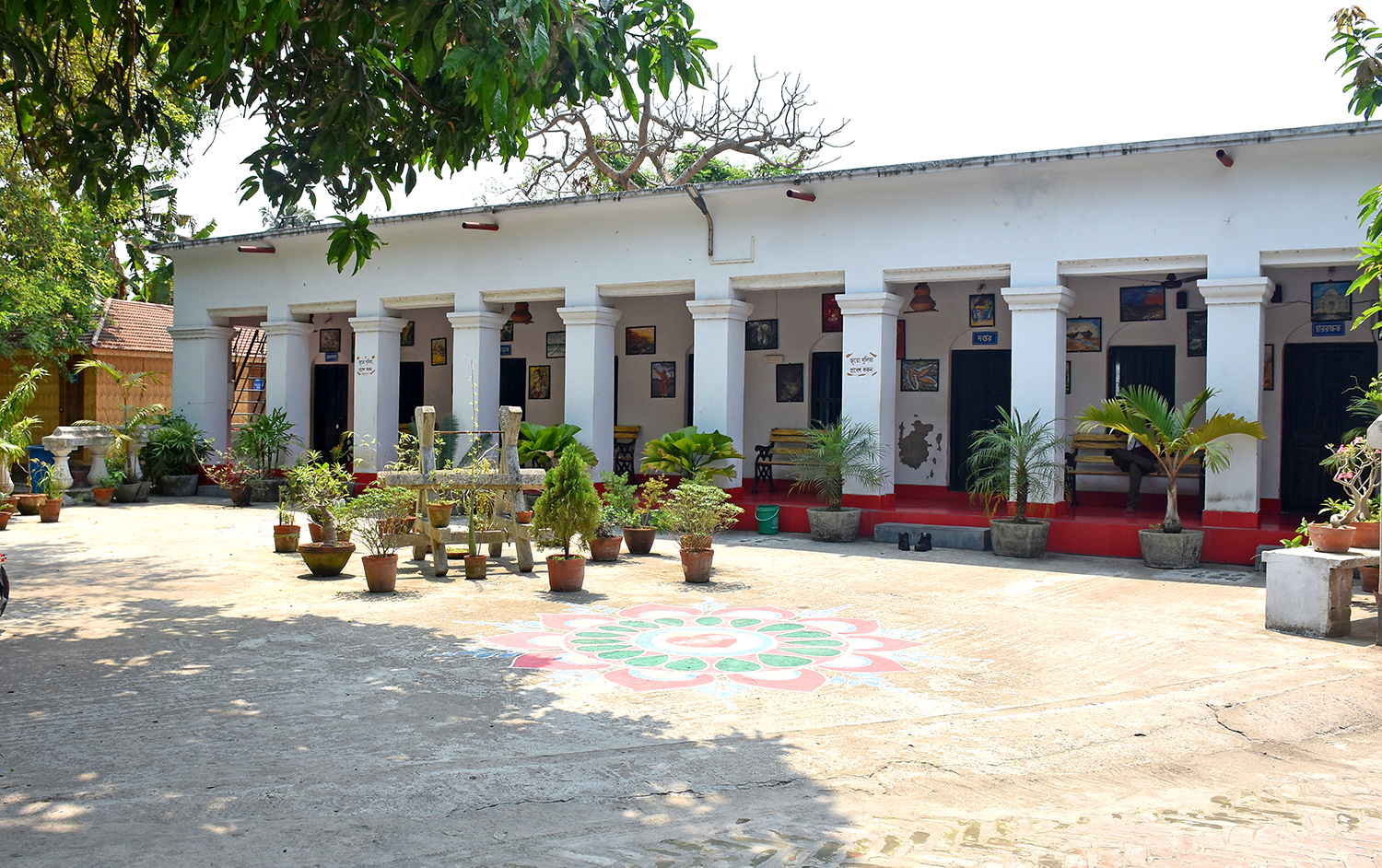
Displaced from one place to another, Abanindranath moves to the city and urban schools. He has no idea what became of the animals at the Bagan Bari, and harbours a guilty sense of having abandoned them. He writes: "It is as if a curtain descended between that life and the life that came after, and remained in place for a long time." He notes, also, that his mother would become panic-stricken at any mention of that old life. He has deleted this last observation in his memoirs, but it is still legible in the manuscript. This intimate geography of the rural home, with its animals, intact family, utopic Bengaliness and financial security is in some ways like Kipling's boyhood, disrupted and compulsively recreated precisely because certain kinds imagination are possible in fiction that, articulated as memory, would rupture the fabric of a colonial reality.
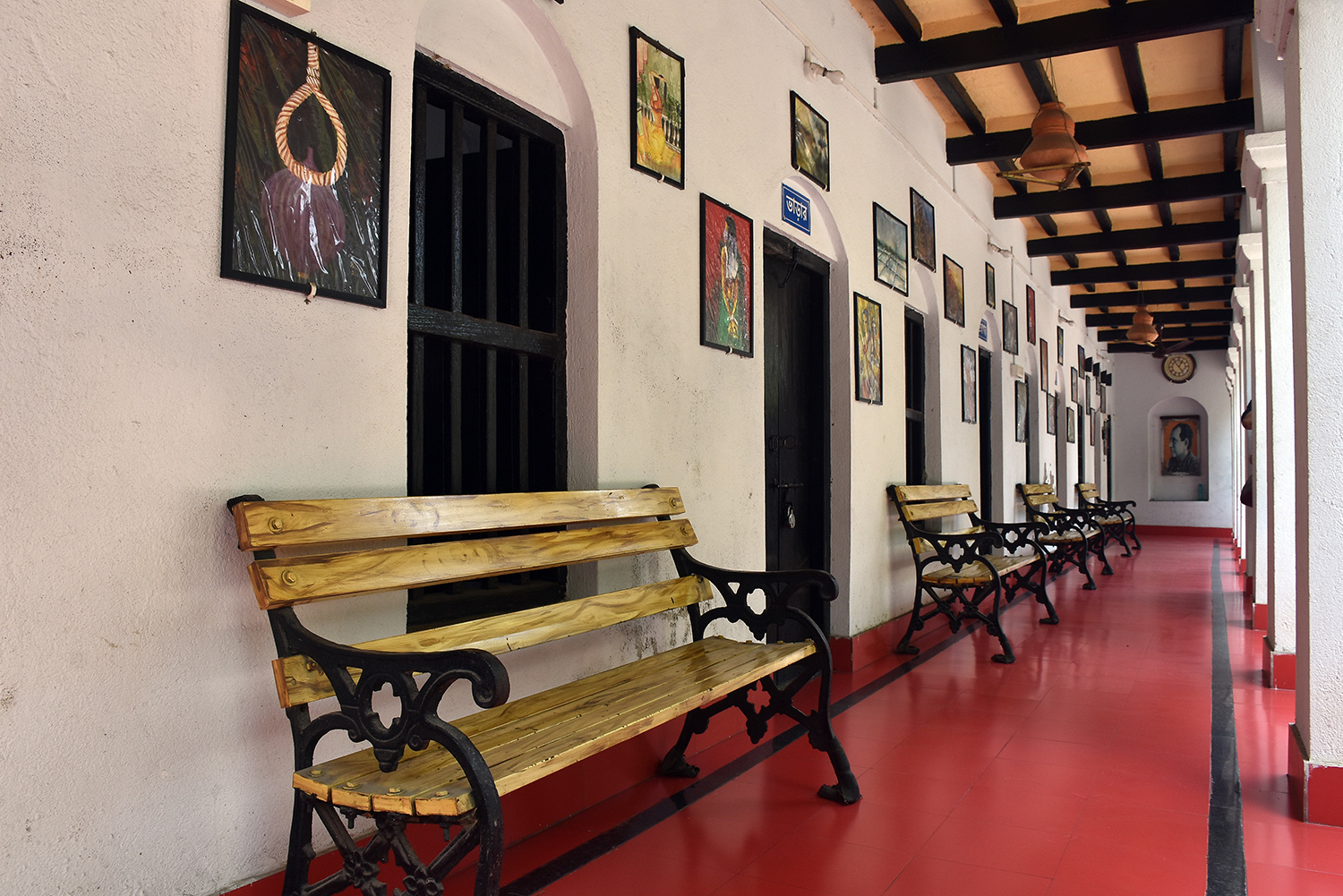
Tailpiece
Abanindranath Tagore’s Bagan Bari is a hidden treasure that many of us living in Kolkata do not know about. This place was declared as a heritage property on May 28, 2007 by the West Bengal Heritage Commission and has since then been beautifully restored and maintained by the Konnagar Municipality. The premise is surrounded by trees and the landscaping is beautifully done. The private ghat is spectacular. This is ideal for a day drive and boasts of very good connectivity by road from Kolkata. An absolute must visit for all, especially for the connoisseurs of literature and art. We can assure you that the visit to Abanindranath Tagore’s Bagan Bari will leave you enriched and will be worth your time.
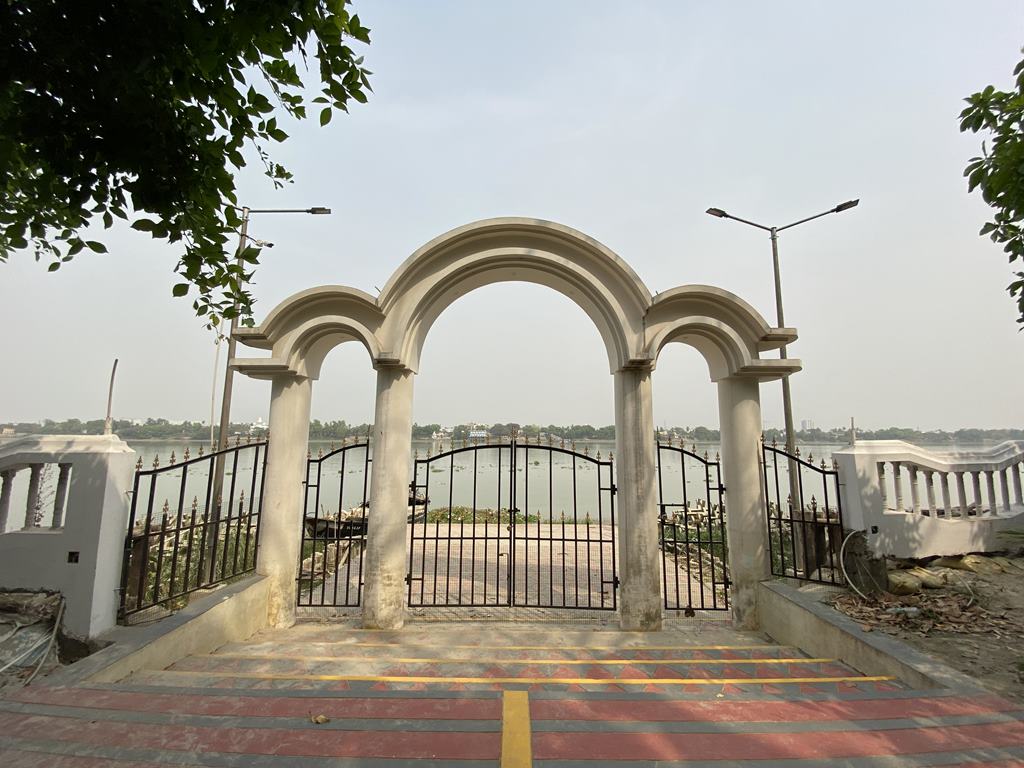
Abanindranath Tagore’s Bagan Bari
2 Mirapara Lane, PS – Konnagar, Dist – Hooghly
Timing: 10 AM to 5 PM
Open on all days, except on public holidays
No entry fee
Photography is permitted
Permission required from Konnagar Municipality for videography
Food and beverages not allowed
Parking in the vicinity on G.T. Road